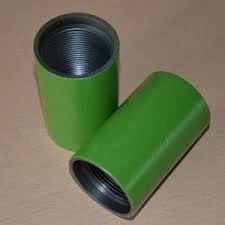- Afrikaans
- Albanian
- Amharic
- Arabic
- Armenian
- Azerbaijani
- Basque
- Belarusian
- Bengali
- Bosnian
- Bulgarian
- Catalan
- Cebuano
- Corsican
- Croatian
- Czech
- Danish
- Dutch
- English
- Esperanto
- Estonian
- Finnish
- French
- Frisian
- Galician
- Georgian
- German
- Greek
- Gujarati
- Haitian Creole
- hausa
- hawaiian
- Hebrew
- Hindi
- Miao
- Hungarian
- Icelandic
- igbo
- Indonesian
- irish
- Italian
- Japanese
- Javanese
- Kannada
- kazakh
- Khmer
- Rwandese
- Korean
- Kurdish
- Kyrgyz
- Lao
- Latin
- Latvian
- Lithuanian
- Luxembourgish
- Macedonian
- Malgashi
- Malay
- Malayalam
- Maltese
- Maori
- Marathi
- Mongolian
- Myanmar
- Nepali
- Norwegian
- Norwegian
- Occitan
- Pashto
- Persian
- Polish
- Portuguese
- Punjabi
- Romanian
- Russian
- Samoan
- Scottish Gaelic
- Serbian
- Sesotho
- Shona
- Sindhi
- Sinhala
- Slovak
- Slovenian
- Somali
- Spanish
- Sundanese
- Swahili
- Swedish
- Tagalog
- Tajik
- Tamil
- Tatar
- Telugu
- Thai
- Turkish
- Turkmen
- Ukrainian
- Urdu
- Uighur
- Uzbek
- Vietnamese
- Welsh
- Bantu
- Yiddish
- Yoruba
- Zulu
what are the differences between casing and tubing?
Casing and tubing are essential components of oil and gas wells, each serving distinct purposes in the drilling and production processes. Understanding the differences between these two types of pipes is crucial for anyone involved in the oil and gas industry.
Casing and tubing are essential components of oil and gas wells, each serving distinct purposes in the drilling and production processes
. Understanding the differences between these two types of pipes is crucial for anyone involved in the oil and gas industry.There are several types of casing, including surface casing, intermediate casing, and production casing. Surface casing is the first layer installed and is crucial for protecting groundwater sources. Intermediate casing follows to provide additional support in deeper sections of the well, while production casing is used for the section from which oil or gas will be extracted.
what are the differences between casing and tubing?

On the other hand, tubing is a smaller diameter pipe that is inserted within the casing. Its main role is to transport the produced hydrocarbons from the wellbore to the surface. Tubing is designed to withstand the flow of oil and gas, including the associated pressures and temperatures, making it crucial for efficient production. Unlike casing, tubing can be easily removed and replaced during the operation of the well, allowing for maintenance and adjustments in production techniques.
Another key difference is that casing is permanently installed after the drilling process, while tubing is considered a temporary installation that can be replaced as needed during the life of the well. This difference in permanence reflects in their design and installation methods. Casing is cemented in place to secure it within the wellbore, while tubing is usually sealed with a device known as a packer, which ensures a tight seal for the flow of hydrocarbons.
In summary, while both casing and tubing are vital for successful oil and gas operations, they serve different functions. Casing provides structural support and protection, whereas tubing is essential for transporting hydrocarbons to the surface. Understanding these differences is key to ensuring efficient and safe production in the oil and gas industry.
-
Tubing Pup Joints: Essential Components for Oil and Gas OperationsNewsJul.10,2025
-
Pup Joints: Essential Components for Reliable Drilling OperationsNewsJul.10,2025
-
Pipe Couplings: Connecting Your World EfficientlyNewsJul.10,2025
-
Mastering Oilfield Operations with Quality Tubing and CasingNewsJul.10,2025
-
High-Quality Casing Couplings for Every NeedNewsJul.10,2025
-
Boost Your Drilling Efficiency with Premium Crossover Tools & Seating NipplesNewsJul.10,2025







